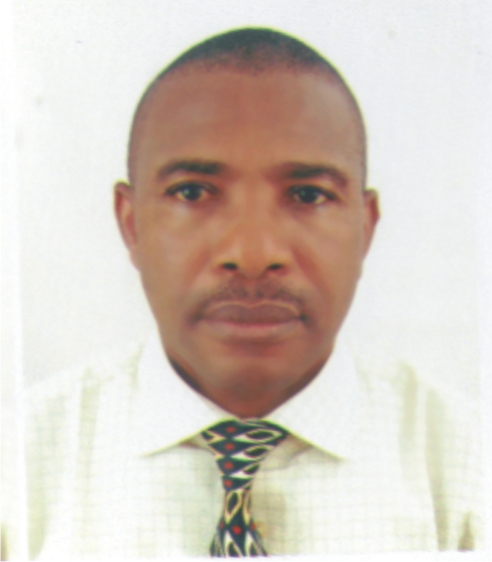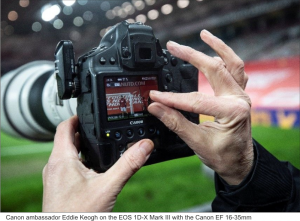Canon professionals roll out vital tips on launching a career in sports photography

August 18, 2021582 views0 comments
- Nigeria not left out of global reach-out
Canon has rolled out vital tips on launching a career in sports photography, with the company’s ambassadors Molly Darlington, Eddie Keogh, Martin Bissig and Richard Walch offering advice for aspiring, young sports photographers.
 The pros agree that it is important for a person to charter his or her own course in sports photography – whether it was in their training or finding their own niche.
The pros agree that it is important for a person to charter his or her own course in sports photography – whether it was in their training or finding their own niche.
They advise aspiring sports photographers to use their youth and inexperience to their advantage. “As a young photographer, just getting started, you should lean on the community of photographers around you to help develop your skills,” said Canon ambassador Molly Darlington. She found that contacting people within the industry for help and feedback helped her to improve her work. “There are a lot of photographers out there to advise you. When you start out it can be daunting, but people are willing to guide you. Put together a portfolio and build a network of contacts,” she continued.
For award-winning action photographer and filmmaker Richard Walch, it is important to team up with young athletes of a similar age, so that you can grow together. “They might have a small sponsor at the beginning, but in a couple of years, they get bigger sponsors and you can build your career with them. When they’re young, they also need photos and will be willing to spend time with you. If they want to use your images for their autograph card or website, then you’re helping each other for free. If their sponsors want to use the images, it becomes business. If you’re friends with the athletes, they let you get close, so it’s not a problem if you don’t have the fanciest equipment.”
Nigeria appears not left out in Canon’s global reach-out. In early July, Canon Central and North Africa (CCNA) launched ‘Canon Imaging Space’ at the Entrepreneurship & Skills Development Centre, University of Lagos, to recognize, educate and empower the emerging talent from Nigeria’s western region. The company said it created a dedicated and permanent platform for developing an interactive imaging space within the university, in its persistent endeavour to endow people with education, skills, tools and opportunities needed for storytelling. The space is provisioned with state-of-art imaging equipment: three cameras and three printers that have been provided to ESDC UNILAG management to facilitate utilization of the space & equipment by the university students. The imaging space will focus on educating, engaging and training students in the art of visual storytelling and photography.
The Canon pros encouraged the young, aspiring photographers to put in hours practicing at local clubs or parks. According to them, it is easy to assume that young photographers were born with a natural talent, but the reality is that they have likely already put in years of hard work. Molly Darlington began photographing her local club at the age of 16. “I saw an advertisement for my local non-league football club, 1874 Northwich F.C., asking if anyone wanted to be a photographer, just for experience,” she explained. “I did that for nearly four years, following them at home and away. I loved it. So that’s what I carried on doing. I was rubbish when I started. I didn’t have a clue what I was doing. I often messed up, but I kept practising my settings,” she said.
Eddie Keogh, veteran sports photojournalist advises young photographers to: “get out in all weather – not just when it’s sunny, because rain can make pictures more atmospheric – and practise, practise, practise”. “A lot of people just want to get to big league football matches as quickly as they can, but they can learn so much more by photographing football, rugby, hockey or tennis at their local park.
Another tip offered by the Canon professionals is creating emotion, even where there is none: “When a football team wins a big championship, it’s not the images of the game that stand out, it’s the shots of the team celebrating, standing on a bus surrounded by thousands of people,” said Richard Walch. He said one has to shoot around the sport: the emotions, the politics, the celebrations and the disappointments. “If you shoot a marathon, you don’t shoot the start, you shoot the finish, because that’s where the emotion is. Look for peak action and peak emotion. If you can combine those in one image, you’ve got it.”
The aspiring sports photographer has to know the sport he or she is shooting, the Canon pros advised. “A crucial factor for success as a sports photographer is knowing the sport you’re shooting”. Martin Bissig,
Another tip is for the aspiring sports photographer to forge his or her own career path. For Molly Darlington, she went through higher education, but still believes one can succeed as a sports photographer by choosing a different path. “A lot of university courses aren’t geared towards sports photography,” she explained, adding: “In the end, mine was fine with me doing it. They tailored my degree and my modules as they knew I was working a lot outside of the course. “But remember, there are other routes – a lot of it is about who you know and learn from. It will seem quite scary going it alone, but it’s not actually that bad. When I was 16, I thought the industry was petrifying. Now I’d tell you it’s absolutely fine,” she said.
